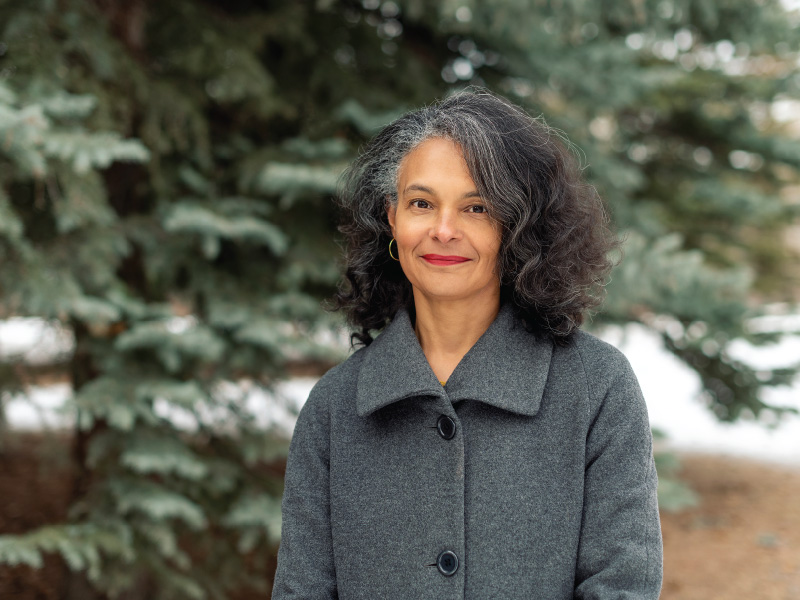Art to the Rescue
Author of six novels and a creative writing professor at the University of Calgary, Suzette Mayr shares how art helps her find her people and herself — how it saves her. Her most recent book, The Sleeping Car Porter, won the 2022 Scotiabank Giller Prize and the Georges Bugnet Award for Fiction.
Art saved me. It saves me every day.
Art is where I found others like me when I was coming of age in Calgary in the early 1990s: I remember devouring books like Jeanette Winterson’s novel Oranges Are Not the Only Fruit about a young woman figuring out her queer sexuality, and gobbling down Cheryl Foggo’s memoir Pourin’ Down Rain about growing up Black in 1960s Calgary. These were guidebooks for figuring out who I was. But books weren’t the only sources of comfort that saved me. I remember being in the audience for performances by One Yellow Rabbit Performance Theatre and avant-garde puppet theatre by Ronnie Burkett. I remember packing into nightclubs to hear bands like Same Difference. I remember learning about the artwork of the United Congress in church of all places because the pastor was loudly objecting to their exhibit, The Castration of St. Paul (no surprise that I stopped attending church and started attending art shows instead).
Art was and continues to be where — as a novelist, artist and worshipper of art — I find my kin. It’s a comfort, but it’s interesting how in times of cultural strife, art and artists can also be construed as troublemakers or even as downright dangerous. One need only think of how dictatorial governments and extremist thinkers have suppressed certain kinds of art, for example, the “degenerate” art of the 1930s, and now, the bookbanning in the U.S. I’m not even sure how to begin interpreting the active homophobic and anti-book pushback against drag-queen storytimes except with profound sadness.
It’s precisely because of the power of art to express feelings that more straightforward media cannot, and art’s ability to bring together like-minded people that make it so potent. Art helps articulate concepts that might otherwise have no name — Margaret Atwood’s handmaids, for example, are a powerful image that embody women’s oppression; Harriet Beecher Stowe‘s book Uncle Tom’s Cabin had profound effects on the abolitionist movement in the United States; and Langston Hughes fused the common, popular roots of jazz music with poetry to elevate Black people.
The late Alberta writer Robert Kroetsch once said, “The fiction makes us real.” When we think of Victorian England, it’s not how history books portrayed the time, but how fiction writers such as Charles Dickens transcribed it into his fiction. The same happens here in Alberta with artists and art groups such as Adrian Stimson, Weyman Chan, Lisa Brawn, the Calgary Animated Objects Society, Land’s End Ensemble and Kyle Edward Ball, among so many others, and their contributions to the spectacular, world-class art scene in Alberta. The art speaks to us — the inhabitants of this place — and it speaks about us. It makes us real.
Next time you’re in any kind of doubt, connect with the art that makes you happiest, that makes you feel the most you, whether a book of poetry, a horror movie, a painting or a video game. It might just be the thing that saves you.
This article was originally published in the 2023 edition of Create Calgary, an annual magazine launched by Calgary Arts Development in 2022 to celebrate the work of artists who call Mohkinsstsis/Calgary home.
You can pick up a free copy at public libraries, community recreation centres and other places where you find your favourite magazines. You can also read the digital version online here.

